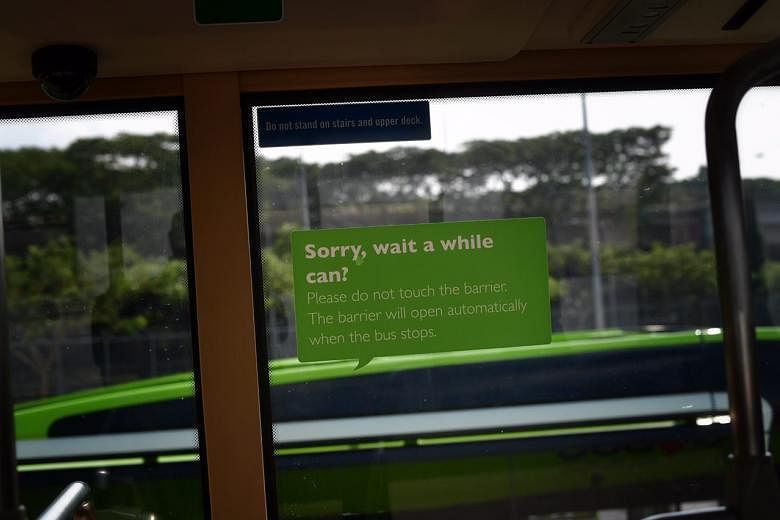SINGAPORE - Commuters on Tower Transit's bus service might be in for another surprise on Monday (March 13), besides the three doors, two staircases and USB charging ports in one of its double-deck buses plying the service 143 route - Singlish signs.
And these signs have attracted both praise and concern among some commuters.
The three-door bus is part of a trial by the Land Transport Authority (LTA) to evaluate the suitability of such a bus design on Singapore's roads. Tower Transit operates the 143 service route and is behind the initiative for the signs.
The collection of signs on the bus feature phrases such as "Here got priority seats!", "Here cannot go in!" and "Here can charge phone!". These lines are followed by text in standard English.
Shipping manager Kong Mun Kit, 68, said the signs had piqued his interest, adding that they were good in "getting people's attention".
"Singlish is a common language used in Singapore. People will take a longer look at the signs," he added.
However, Mr Rey Serrano, a 34-year-old design engineer, felt that the signs did not do Singaporeans any favours.
"Tourists who do not know Singlish might misunderstand the sign and leave with a bad impression of Singaporeans' standard of English," he said.
Tower Transit Singapore's group communications director Glenn Lim said the signs are located strategically around the bus, such as near the doors and reserved seats, to help commuters "use the services provided on the bus better".
He added that the company did not want the signs to be "run of the mill" and "only the headlines are in Singlish, to grab the passenger's attention, so they will read what is beneath".
For clarity, the signs are all accompanied by short explanations in standard English.
There is also a "You know anot?" sign that briefly introduces the design of the bus. The vehicle is 0.8m longer than the average bus and can carry up to 139 passengers.
Mr Lim said the notices will help familiarise passengers with the key features of the bus, such as the additional staircase and USB charging ports.
Noting that the signs include text in standard English, Mr Zaqy Mohamad, chairman of the Government Parliamentary Committee for Communications and Information, said that the signs should be taken "with a sense of humour" and that "we should...give some leeway for advertising".


